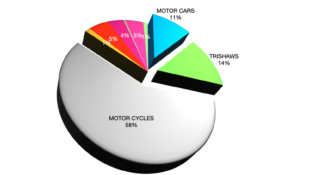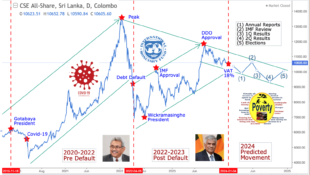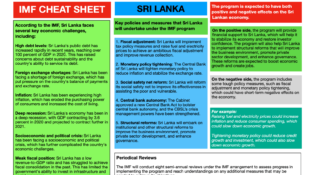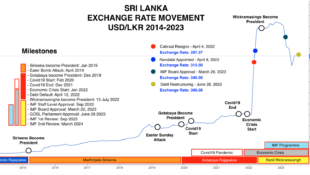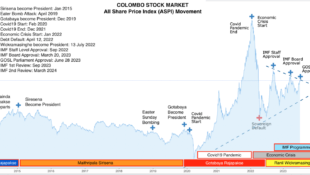Key words: Exports, Sri Lanka, International Trade
Introduction
The term of Export means that shipping in the goods and services out of the jurisdiction of a country. The seller of such goods and services is referred to as an ‘Exporter” and is based in the country of export whereas the overseas based buyer is referred to as an “Importer”. In international trade, “exports” refers to selling goods and services produced in the home country to other markets.
Exports in Sri Lanka is reported by the Central Bank of Sri Lanka. For this task, this article will take into account export data between 2010 and 2015 released by the Central Bank of Sri Lanka. Data pertaining to export markets and export items will be considered separately for greater clarity. Export is an important issues, for example it has many effect to the economic growth. After 1977 Sri Lankan economy turned in to international trade. Then the government used many strategies to move with international competition. According to present view,The performance of Sri Lanka’s external sector reflected the impact of the changing global economic environment as well as a number of developments in the domestic economy. Mainly, Sri Lankan Export items are surrounding toward Tea, Rubber-based Products, Gem Diamond & Jewellery, Coconut & Coconut-based Products, ICT / BPO Services, Fruit & Vegetable & etc.
The effects of Open Market Economy
Before 1977, Economic of Sri Lanka followed internal oriented economic policies, such as limitation of exports and imports, limitation of the foreign exchange currency. Since becoming country came under UNP rule in which under President J.R Jayawardana Sri Lanka began to shift away from a socialist orientation in 1977. Then, the government has been privatizing, deregulating, and opening the economy to international competition. After the disastrous consequences of the anti-export bias and import substitution polices, Sri Lanka since 1978, has implemented many strategies and programs to promote export oriented agriculture and industries. After the 1977, policy makers follow more external oriented policies. Some characterizes of the economic in these years, shown below.
Liberalization of the economy
Decrease rules related import and exports
Cancel the multiple exchange rates and official exchange rates Foreign investments were increased in Sri Lankan economy
Industries developed armed to foreign market
By 1996, while textiles and garments accounted for 63%, the plantation crops made up only 20% of exports when compared with 93% in 1970. GDP grew at an annual average rate of 5.5% throughout the 1990s until a drought and a deteriorating security situation lowered growth to 3.8% in 1996. The economy rebounded in 1997-98 with growth of 6.4% and 4.7% - but slowed to 3.7% in 1999. For the next round of reforms, the central bank of Sri Lanka recommends that Colombo expand market mechanisms in non-plantation agriculture, dismantle the government's monopoly on wheat imports, and promote more competition in the financial sector.
Recent trends in Exports
“Exports recorded an impressive growth from the second half of 2013 with the recovery in Sri Lanka’s traditional markets, such as USA and the EU. The expansion in domestic economic activities, a favourable investment climate and conducive external trade policies also supported the growth in exports in 2013.” (Central Bank’s Annual Report-2013). While undeniably any country would be adversely affected by negative growth in its major export destinations, the turmoil in the Western markets following 2008’s global financial crisis and the slowdown which occurred thereafter served as a ‘wake-up call’ for Sri Lanka, emphasizing the danger of over-reliance on a few markets and few goods to drive export earnings. Therefore, this juncture is as suitable as any to analyse Sri Lanka’s export performance over the last few years and to ascertain whether the trends one can dentify with regard to exports are positive or negative and what action, if any, the country could take to ensure continuous expansion of exports.Considering Sri Lanka’s export markets, a few important trends are visible. Sri Lanka has often shied away
147
wd3⁄4ÓlúoHd 2016
from recalling the tough times during the good times and has on occasions paid dearly for this mistake later on when ‘the going gets tough’. The significant increase in imports after the war, which thereafter required painful reforms to rein in the burgeoning trade deficit which resulted, can be considered to be a good example in this regard.
Exports have performed quite well since June 2013, particularly towards the very end of last year. Sri Lanka nearly managed to achieve a ‘hat-trick’ of three consecutive months of exports exceeding $ 1 billion due to strong export performances in the months of October, November and December 2013. This encouraging performance in exports appears to have been extended to 2014, with the country witnessing an unprecedented $ 1,070 million in export earnings during March 2014.While these are undoubtedly positive signs, it should not be forgotten that the pickup in exports was largely a result of positive developments in Sri Lanka’s major export markets rather than due to its own efforts. The Central Bank partly acknowledges this fact in its 2013 Annual Report though it also places considerable weightage (to a greater extent than other commentators on the particular issue have done) on conducive domestic policies.
The central Bank’s 2015 Annual Report says, “The performance of Sri Lanka’s external sector reflected the impact of the changing global economic environment as well as a number of developments in the domestic economy” ( Central Bank Annual Report-2015). So in spite of the benefit of lower expenditure on fuel imports, the merchandise trade deficit widened 6 marginally by 1.7 per cent over the previous year, due to the increase in non- oil imports and the slowdown in export earnings. Exports in Sri Lanka increased 5.7 percent year-on-year to 898 USD Million in September of 2016 hitting its highest level since March. Exports in Sri Lanka averaged 703.18 USD Million from 2003 until 2016, reaching an all-time high of 1070.10 USD Million in March of 2014 and a record low of 304.80 USD Million in April of 2003. Sri Lanka export mostly textiles and garments (52% of total exports) and tea (17%). Other include; Spices, Gems, Coconut product, Rubber and Fish.
Main Export partners
India and Pakistan
Sri Lanka’s earnings from exports to India – the country’s third largest export market – as a percentage of total export earnings have actually fallen by around 3% between 2005 and 2012. This was a worrisome trend – especially considering the Free Trade Agreement (FTA) between the two countries – as it could imply that Sri Lanka’s efforts to diversify its export markets by focusing on its Asian counterparts have not yielded any substantial success. Moreover, though India is Sri Lanka’s third largest export market, in relative terms it is significantly behind USA and UK. In 2012 earnings from exports to India were only about a quarter of the value of earnings from exports to USA. Despite there being a FTA between the two countries, in 2012 Pakistan occupied the 24th position in terms of Sri Lanka’s largest export markets. A key point to note in this context is that cumulative export earnings from India and Pakistan – two countries with which Sri Lanka has signed FTAs – accounted for only slightly more than seven per cent of the country’s total export earnings in 2012. Exports in Sri Lanka to India moves to 4.00 INR Billion from 3.03 INR Billion in September of 2016.
USA and UK
Considering the period between 2005 and 2012, it appears that Sri Lanka’s reliance on the USA (Sri Lanka’s top export market) has declined considerably – which could indicate greater market diversification. While in 2005 earnings from exports to USA constituted 32.2% of Sri Lanka’s total export earnings, this figure had reduced by around 10% by 2012, which is encouraging. In September, 2016 earnings from export to USA were 234.41 USD Million.
China
Interestingly, the country was ranked Sri Lanka’s 16th largest export market in 2012. China – with which Sri Lanka is mulling a FTA – remained a relatively unimportant export market in 2012 with earnings from exports to China accounting for a meagre 1.2% of total export earnings. In September 2016 earnings from export to China increased to 25732.00 USD THO from 25103.00 USD THO.
Africa and Latin America
In considering any set of figures, one should realise that often what the figures ‘do not’ represent is as important as or more important than what the figures ‘do’ represent. Africa and Latin America are particularly noteworthy in their complete omission considering Sri Lanka’s 10 major export markets in 2012.
Germany
Sri Lankan earning from export to Germany moves to 51985.00 EUR THO in September 2016 from 52870.00 EUR THO.
Conclusion
The term of Export means that shipping in the goods and services out of the jurisdiction of a country. Since 1977 to 2015, Sri Lankan Export was performing several roles such as good or bad & moderate. After 1977, the government has been privatizing, deregulating, and opening the economy to international competition. In conclusion, while one cannot witness significant export or product diversification with regard to Sri Lankan exports, this does not appear to be an undue cause for alarm in the immediate term. However, Sri Lanka should not forget the hard lessons learned during the aftermath of the global financial crisis and the ‘bad days’ for exports which was its ultimate result. Exports in Sri Lanka averaged 703.18 USD Million from 2003 until 2016, reaching an all-time high of 1070.10 USD Million in March of 2014 and a record low of 304.80 USD Million in April of 2003. Sri Lanka export mostly textiles and garments (52% of total exports) and tea (17%). Other include; Spices, Gems, Coconut product, Rubber and Fish. And the main export partners are United States, United Kindom, Germany, Belgium and Italy. The country is targeting ambitious $ 20 billion in export earnings by 2020. Pursuing product and market diversification together with export development could put the country’s exports on a stronger footing.
https://youtu.be/oc3ms6CAVOs?t=6
 would enable you to enjoy an array of other services such as Member Rankings, User Groups, Own Posts & Profile, Exclusive Research, Live Chat Box etc..
would enable you to enjoy an array of other services such as Member Rankings, User Groups, Own Posts & Profile, Exclusive Research, Live Chat Box etc.. 
 Home
Home


















